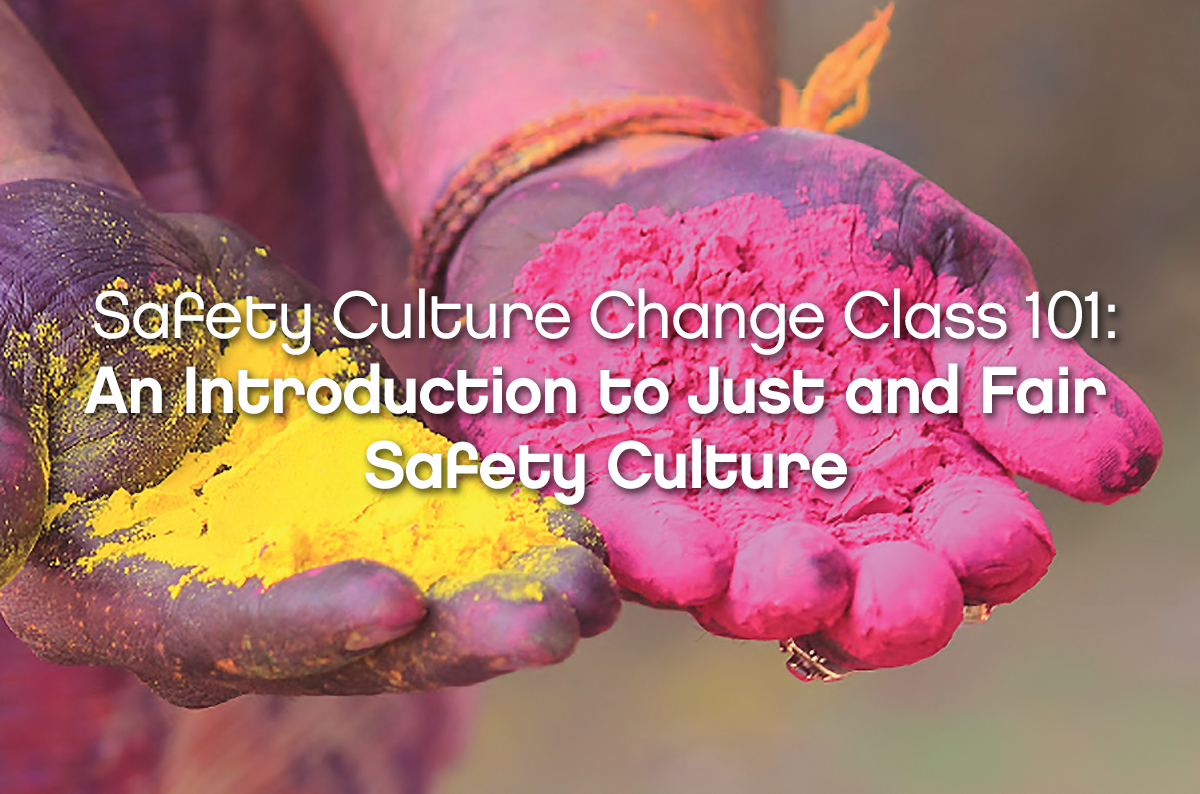
Safety Culture Change Class 101: An Introduction to Just and Fair Safety Culture
A Google study showed that the most important factor of a high performing team was a sense of psychological safety 1
Psychological safety can be described as the belief that one can speak up without risk of punishment or humiliation. And it’s been well established as a critical driver of high-quality decision making, healthy group dynamics and interpersonal relationships, greater innovation, and more effective execution in organisations.
In a high performing safety culture, we need people to feel they can speak up about mistakes and make suggestions for improvement without the fear of blame. This, in essence, is a ‘just and fair culture’.
Just and fair safety culture
There are three cultures of safety accountability: blame, no blame and just and fair. Each describes how people are treated in the event of an incident. In poorly developed safety cultures the default position is almost invariably to blame the individual if an incident happens.
No blame considers almost all contributing factors such as leadership, training, engineering but fails to adequately address contributing behaviours. A just and fair safety culture is when people at all levels recognise and understand their responsibilities for safety.
Well-developed just and fair safety cultures will feature fair treatment of individuals in the event of incidents, recognition systems for safe behaviour and people understand they can be held accountable for their actions.
They understand this is on the basis that any apparently substandard practice will be objectively examined to ensure people are not victimised. Gross negligence, wilful violations and destructive acts are not tolerated.

Steve Beswick, Tribe Lead Consultant, says, “Just and fair culture is much more about building confidence and trust so that if you do speak up, you will be treated fairly and that a consistent approach will be taken no matter which leader is involved. It’s not just about either having a ‘blame’ or ‘no blame’ culture. Employees know when something is unfair and unjust. These perceptions influence how they view the organisation they work for, its leadership and even their own line manager.”
He continues, “What then typically follows is a long list of negative outcomes such as reduced engagement levels, poor safety climate and even some form of retribution such as not reporting a near miss or excluding safety critical information at a handover.”
[1] https://rework.withgoogle.com/blog/five-keys-to-a-successful-google-team/
What might you expect to see in an organisation with a just and fair culture?
We’d expect to see the following:
- A rigorous, objective and, above all, fair incident investigation process
- A healthy near miss and hazard reporting system that people are confident to contribute to
- Clearly defined standards of safe behaviour that are practical and people are willing to follow
- People from all levels are providing solutions as well as identifying safety problems
- Reward and recognition systems that encourage safe activity
- People who are confident to stop a job on safety grounds.
How do I know if I have a blame culture or a just and fair culture?
Depending on who you ask in the organisation you may get a different answer. Perhaps your leaders feel they deal with people fairly, but from the perspective of an employee, things may be perceived differently – especially if incidents are dealt with inconsistently or there’s a lack of open and honest feedback.
If your near miss incident reporting is very low, it’s possible everyone is working safely all the time, but it’s more likely that people don’t feel confident that they will be treated fairly if they share a close call.
The best way to get an accurate picture is to carry out a Safety Culture Assessment. This will ascertain your organisation’s current culture.
A Culture Assessment should indicate the level of culture maturity. It should also show whether blame, no blame or just and fair prevails.
Introducing tools to support a just and fair culture
There are a number of elements to make the transition to just and fair:
- Define a just culture decision tree. This is a flowchart featuring a series of yes/no options which establish why an individual acted as they did in the event of an incident. People using such a tool will require training in its use.
- Define a measures table. In larger organisations, measures tables provide possible actions based on the findings from the decision tree.
- Implement a reward and recognition programme. Businesses reward performance in line with what’s really valued in that organisation. So when you recognise success and increase safety recognition, you show your workforce how much importance you place on health and safety.
But this list isn’t exhaustive. Steve says, “As concepts, ‘fair’ and ‘just’ are bigger than safety culture and I believe there are many other non-safety related opportunities to show organisational fairness to employees. For example, having effective organisational learning and restorative justice processes. Or an organisation could invest in management development to specifically help managers build higher levels of trust with their teams.”
Steve believes these aspects help create the readiness conditions in which a richer, multi-dimensional version of the just culture concept can have the chance to flourish. “Good safety leadership is just good leadership I seem to recall someone once saying,” he adds.
Find out more
Where do you think your organisation is on the journey to becoming just and fair?
To learn more and find out how we can help you, get in touch or find out about Chrysalis Culture Hub – our online platform to support every aspect of your culture change journey including developing a just and fair culture.
About Steve Beswick
Lead Consultant




